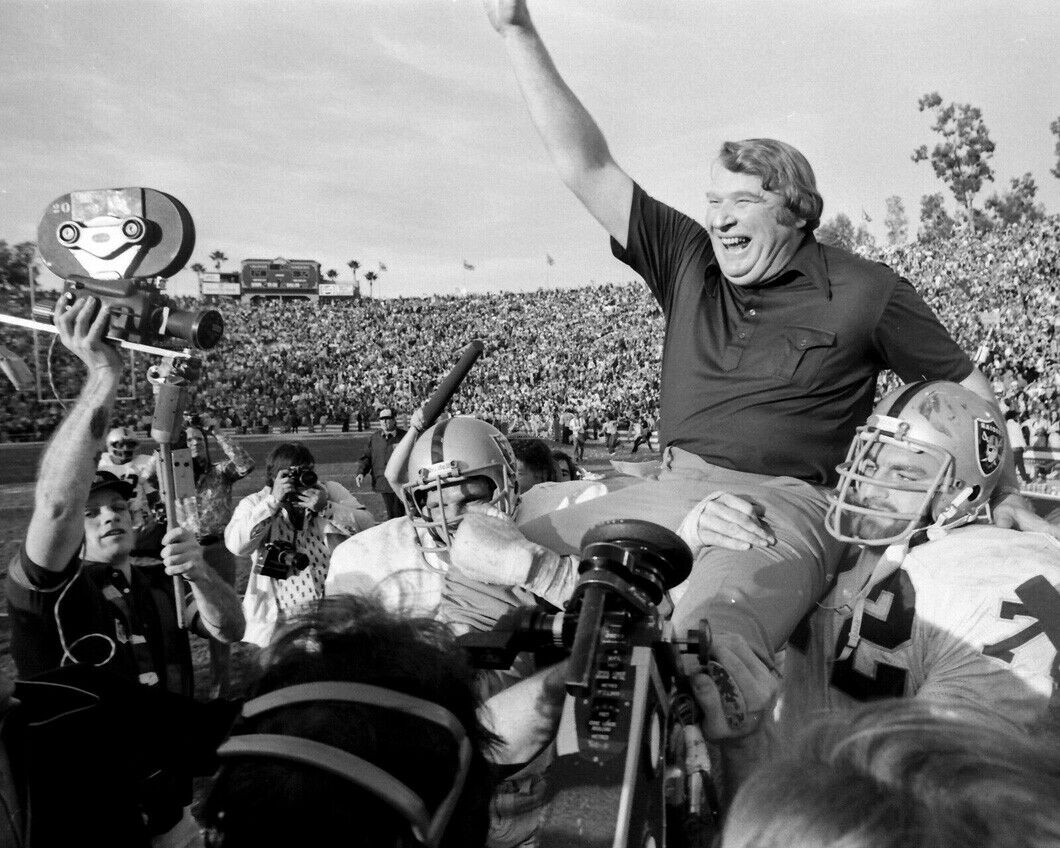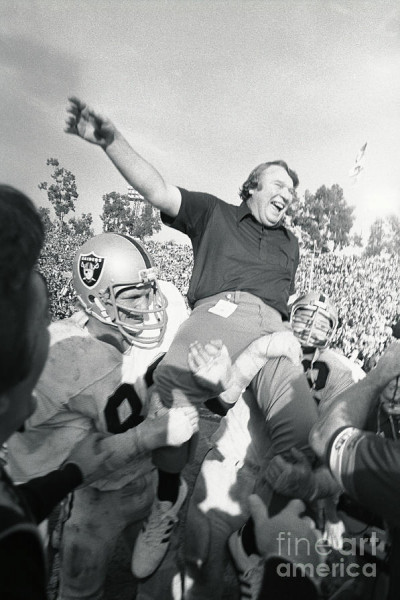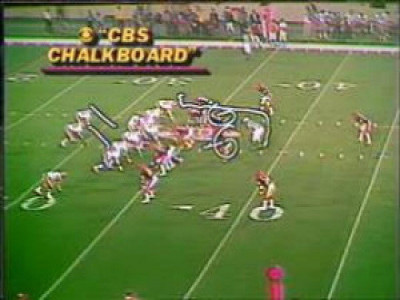John Madden: The Luckiest Man in the World
January 27, 2022

By: Allie Little
“They’ve got a good life, blimps. They always get to go to games and watch everything. I think if I come back in another life, I’d like to be a blimp or a seagull.”
- John Madden
On December 28th, 2021, a wave of sorrow swept through the National Football League at the news of John Madden’s death. Madden’s name is known by many who have the slightest knowledge of football but adored by those that love the game. Football was a constant in Madden’s life, and he would often call himself the ‘luckiest man in the world.’ He had a childlike enthusiasm for the game and dedicated his life to inspiring others to also love football.
John Madden’s life centered around football and teaching. After graduating high school, Madden attended California Polytechnic State University where he continued his football career and achieved a Bachelor’s and Master’s degree in education. He eventually suffered an injury that ended his career as a player, but pushed him in the direction of coaching.
His coaching style developed from Madden being a curious student first and foremost. After he could no longer play for Cal Poly, he spent the season watching film with his coach, taking in every frame and every morsel of insight he heard. Madden described this season as a very silent time. Often never asking questions or offering any input, instead he chose to absorb information like a sponge. There were many prolific coaches making a name for themselves around the time that Madden was attempting to gain all the knowledge he could. One of the largest voices in the game was Vince Lombardi, who the Super Bowl trophy was named after. Madden remembered attending a seminar given by Lombardi where Lombardi talked about a single play for the entire eight hours. It was at this seminar that Madden came to the realization that he knew nothing about this game, but he wanted to know everything.
Madden steadily worked up the coaching ladder from working at a Junior College to eventually becoming the Linebacker coach for the Oakland Raiders. In this position, he coached alongside and against his heroes like Vince Lombardi and coached in Super Bowl II where Oakland lost to the Greenbay Packers. When head coach John Rauch left the position, Madden gladly filled the spot. At the start of his prolific 10-year career as the head coach of the Raiders, Madden made it clear he wasn’t like any coach these players had seen. At the age of 32, Madden was officially the youngest head coach in the NFL, and he was less concerned with the priorities of an older generation. John Madden famously had only three rules for his players:
1. Be on time
2. Pay attention
3. Play like hell, when I tell you to
He abolished the dress code, stating that a suit and tie on a plane doesn’t win football games. He allowed his players to sit on their helmets on the sidelines, which was previously forbidden. All these changes were enacted because Madden wanted the players to be comfortable and be themselves. He used his degree in education to adapt his coaching styles for each player. He acknowledged that some players respond well to the traditional yelling of corrections but other players simply needed a pat on the back. Using his years of being a student and learning from the best coaches in the league, Madden prioritized open communication on his team and wanted to create an environment of respect and trust.
This strategy worked wonders for the Oakland Raiders. Under the coaching of John Madden they played more aggressively and saw more success than ever before. Their hard work and intense form of play finally paid off at Super Bowl XI where, for the first time, the Oakland Raiders were crowned champions after a victory over the Minnesota Vikings. Photos and videos from the celebration after the game are pieces of history on their own. A photo of Madden being carried around the field by his players is synonymous with the game of football. Madden eventually left coaching after the 1978 season, two years after Oakland’s win at the Super Bowl. He cited the lack of anything else to accomplish as the reason he left.

Ironically, Madden didn’t respect broadcasting while he was in the league as a coach. He had no interest in becoming a commentator and turned down many different offers to do such a job. After a conversation with his agent and multiple more offers to sit in the broadcaster’s seat, Madden eventually accepted a commentator position and worked on getting comfortable behind a microphone. His style of announcing was unique and it’s fair to say that the energy he had on the screen came from his love of the game and desire to share it. He covered more of the play reviews and left the play-by-play coverage to his friend and colleague Pat Summerall. This perfect duo announced many of the biggest games in the league during their time at the same network. Pat Summerall was the straight man to Madden’s energetic style and this led to many entertaining conversations during the games. Another distinctive style to Madden’s announcing was his use of exclamatory statements. No broadcast was complete without a ‘BOOM!’ ‘BAM!’ or ‘POW!’ from Madden’s side of the booth. He also had a love for the CBS Chalkboard that allowed him to draw different plays on screen for the viewers at home. Often, he would draw so much and speak so fast that Summerall would be at a loss for words at the conclusion.

His popularity in the booth led to other unique opportunities for Madden to share his love of football. EA Sports approached the already legendary coach and commentator about lending his name and voice to a video game they were developing that would let people at home learn and play football whenever they wanted. In 1988, the first edition of Madden NFL was released on the Apple II, MS-DOS, and Commodore 64. This game would begin the legacy of one of the most successful video game franchises in history, with a new version releasing at least once a year since 1990.
In 2006, the inductees to the Pro Football Hall of Fame were announced. Among names such as Reggie White and Troy Aikman, John Madden was listed as an official member of the Hall of Fame. His induction wasn’t for his broadcasting or the video game franchise that he helped create; instead it was for his coaching. A lifelong educator, John Madden was finally immortalized as a teacher of the game he loved so much. During an interview Madden expressed why he was so happy to have a bronze bust of himself in the Hall of Fame next to so many other legends and friends,
“...once the last guy closes the door, I believe that the busts talk to each other.”

Before deciding to write about John Madden, I knew nothing of the man besides the name. It was the name written on the video game that I’d played a handful of times and heard it while watching various broadcasts on TV. I eventually decided to call my dad and ask him what he thought of when he heard the name John Madden. My dad is a lifelong football fan and grew up watching games that Madden would be an analyst on. After I asked him, he told me that Madden was ‘a lifelong teacher of the game.’ There is no question that John Madden loved football, but his desire to share his love of the game eclipsed anyone else on the field.